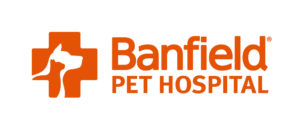I love picking up new colorful phrases. I especially find joy in short sayings that express a pile of emotions in itty-bitty packages. A recent phrase caught my attention when I asked someone how they have been doing and they replied “Busy. My plate runneth over.”
The combination of “my plate is full” with “my cup runneth over” really captures the experience of feeling overwhelmed by good things in a way I haven’t heard before.
I’m a big believer that staying busy is a positive thing. I find that I’m happier and feel better about myself when I’m steadily hustling from one project to the next. At the end of a busy day, assuming my pace is intentional rather than frantic, I feel accomplished and have enjoyed ticking things off my to-do list.
Crossing the line between ‘busy’ and ‘overwhelmed’
The problem I (and I’m sure others) experience is when busy becomes overwhelmed. Once I fall over that edge, I simply can’t get everything done. And my enjoyment of being productive begins to turn into a feeling of failure.
Unfortunately, I’ve had this experience a lot over the past 6 months. My job at Uncharted has been wonderful, but endless, and my number of employees has more than doubled. We have so many active projects running that I’m genuinely excited about. My enthusiasm, however, has not saved me from occasionally feeling like I’m drowning in my task list. My plate has truly runneth over.
So what do you do when you get to this point?
When you are too busy and honestly don’t think you can take projects or commitments off of your plate, how do you make peace with the fact that some days you simply can’t get everything done? Is there a healthier approach than just resigning yourself to trudging onward while trying not to think about how many things are piled on top of you?
How to undo your overwhelm
The solution that has made a huge difference for me is pretty simple: break my overwhelm into pieces and spread it out on the calendar.
For example, getting a new hire effectively onboarded is an enormous task. It takes a lot of time. Projects like this can make me feel like I’m failing every day that I have not gotten this person fully onboarded. It’s this nagging feeling of not getting all your work done day-after-day for months. And it’s how a lot of people spend their time!
My advice is to imagine what a fully on-boarded person looks like. Then, break out the steps it would take to get your new hire to that point. Put those steps on the calendar spread over a reasonable timeframe. Now, you’re not failing because the new person is not fully onboarded. You’re succeeding because your goal for this week was to cover one specific part of their training and you did that. Also, next week doesn’t seem terrible because you only have to do the next piece of the program you created.
Yes, I know this sounds basic. But it can be life-changing. Think about the big thing that’s hanging over your head and decide what “done” looks like. Then write down the action steps it will take to get you there and put each one on your calendar. Voilà! You’re not struggling anymore. You’re running a manageable program… and you’re right on schedule.

